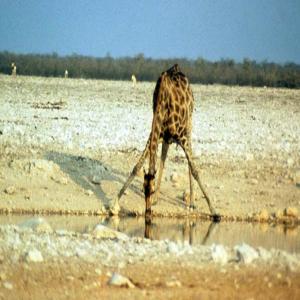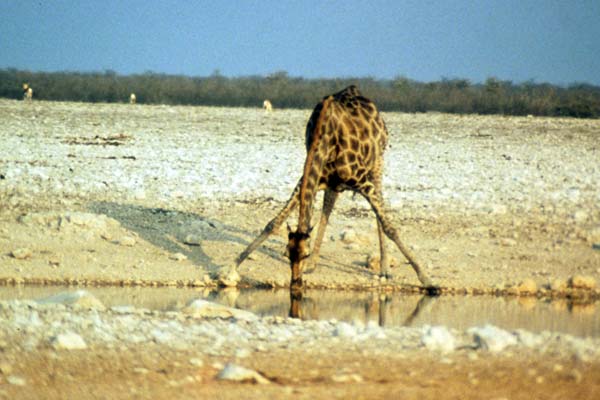Episodes

Monday Sep 27, 2010
The WildLife: Bear Behavior & Emotions, Else Poulsen, Part II
Monday Sep 27, 2010
Monday Sep 27, 2010
Else Poulsen, bear expert and author of the book SMILING BEARS, shares her insights into bear behavior and emotions through stories about some of the bears she has known. She also details to “The WildLife” host Laurel Neme how she uses this knowledge to improve the lives of bears in captivity in this second of a two-part interview. Else Poulsen has worked at the Calgary and Detroit zoos and is known internationally for her captive bear husbandry and rehabilitation. In 2000 she won the Zookeeper Research Excellence Award from the American Zoo and Aquarium Association’s Bear Taxon Advisory Group. She currently lives in southern Ontario, Canada and works as an animal management consultant for zoos, sanctuaries, wildlife rehabilitators, and other animal welfare groups. She’s written about her experiences in an engaging narrative non-fiction book, SMILING BEARS: A Zookeeper Explores the Behavior and Emotional Life of Bears, which has been short listed for the Edna Staebler Literary Award for Creative Non-Fiction . This episode of “The WildLife” aired on The Radiator, WOMM-LP, 105.9 FM in Burlington, Vermont on September 27, 2010. (Part I aired on September 20, 2010.)

Monday Sep 20, 2010
The WildLife: A Zookeeper's Bear Adventures, Else Poulsen, Part I
Monday Sep 20, 2010
Monday Sep 20, 2010
Else Poulsen, bear expert and author of the book SMILING BEARS, talks about her adventures as a zookeeper and her work uncovering the emotional lives of bears in this first of two-part interview. She reveals to “The WildLife” host Laurel Neme what makes these creatures so special – something she’s learned from years of raising bears, nursing bears back to health, comforting bears, communicating with bears, teaching bears, and learning from bears. Else Poulsen has worked at the Calgary and Detroit zoos and is known internationally for her captive bear husbandry and rehabilitation. In 2000 she won the Zookeeper Research Excellence Award from the American Zoo and Aquarium Association’s Bear Taxon Advisory Group. She currently lives in southern Ontario, Canada and works as an animal management consultant for zoos, sanctuaries, wildlife rehabilitators, and other animal welfare groups. She’s written about her experiences in an engaging narrative non-fiction book, SMILING BEARS: A Zookeeper Explores the Behavior and Emotional Life of Bears, which has been short listed for the Edna Staebler Literary Award for Creative Non-Fiction . This episode of “The WildLife” aired on The Radiator, WOMM-LP, 105.9 FM in Burlington, Vermont on September 20, 2010. (Part II aired September 27, 2010.)

Tuesday Sep 07, 2010
Tuesday Sep 07, 2010

Monday Aug 23, 2010
The WildLife: Wildlife Rescue Centers, Tracy O'Toole
Monday Aug 23, 2010
Monday Aug 23, 2010
Tracy O’Toole talks about the illegal international pet trade in Central America and what happens to birds, primates and other animals once they’re confiscated by wildlife law enforcement. She tells “The WildLife” host Laurel Neme about the challenges facing wildlife rescue centers and what’s required for successful rehabilitation and release of seized wildlife. Listen and hear how parrots rescued from the fate of being illegally shipped around the world must relearn to fly and hunt, why release sites are so important for success, and the psychological impact of the process on the animals. Tracy O’Toole currently serves as the Director of Wildlife Development Programs for the International Trade and Development Division of Humane Society International. She oversees programs to build capacity in Central America for enforcement of laws to stop wildlife trafficking and for establishment and running of wildlife rescue centers. She also works on public education and outreach programs to combat illegal wildlife trade throughout the region. Before joining the Humane Society, Ms. O’Toole worked extensively in the fields of international development and conservation for various donor organizations including the U.S. Agency for International Development and Europe Aid. She holds a master’s in International Business, a B.A. in International Relations, and is fluent in French, Portuguese and Spanish. This episode of “The WildLife” originally aired on The Radiator, WOMM-LP, 105.9 FM in Burlington, Vermont on January 11, 2010 and was rebroadcast on August 23, 2010.

Monday Aug 16, 2010
The WildLife: Elephant Seals, Christine Heinrichs
Monday Aug 16, 2010
Monday Aug 16, 2010
Christine Heinrichs exposes elephant seals’ captivating habits and bizarre lifestyle as she takes us to Piedras Blancas elephant seal rookery on California’s central coast. She tells “The WildLife” host Laurel Neme how elephant seals spend 8 to 10 months a year in the open ocean and that, to find food, they dive incredibly deep, up to a mile underwater. Twice a year they migrate thousands of miles to their land-based rookeries to give birth, breed, molt and rest. Listen as we meet some of these fascinating creatures — such as bull elephant seals who battle rivals for months only to lose out when the females finally come ashore and a courtly male who escorts his lady friend through hoards of suitors so that she can safely reach the ocean — and find out just how much we still have yet to learn. Christine Heinrichs is a docent with Friends of the Elephant Seal (www.elephantseal.org) who works at Piedras Blancas elephant seal rookery where she helps protect these large marine mammals and educate visitors about their unique characteristics. She enjoys animals of all kinds, wild and domestic, and has written two books on domestic poultry, How to Raise Chickens and How to Raise Poultry, which focus on raising traditional breeds in small flocks. This episode of THE WILDLIFE aired on The Radiator, WOMM-LP, 105.9 FM in Burlington, Vermont originally aired on December 7, 2009 and was rebroadcast on August 16, 2010.

Monday Aug 09, 2010
The WildLife: Smithsonian's Feather Identification Lab, Marcy Heacker
Monday Aug 09, 2010
Monday Aug 09, 2010
Marcy Heacker, a wildlife forensic scientist at the Smithsonian Institution’s Feather Identification Lab in Washington, DC, discusses wildlife forensics, bird strikes and feather identification. She tells “The WildLife” host Laurel Neme how her analysis helps airports manage wildlife to enhance airline safety and also talks about how she and the other forensic scientists at the lab helped analyze the crash of US Airways flight 1549, the Miracle on the Hudson. While typically the result is not as catastrophic, birds and other wildlife strikes to aircraft annually cause over $600 million in damage to U.S. civil and military aviation each year. The Smithsonian’s Feather Identification Lab identify the species involved and thus help airport biologists manage the habitats in such a way so as to discourage wildlife from congregating in the area. While the methods vary depending on each unique situation, it works. For example, New York’s JFK International Airport reduced gull strikes by roughly 80 percent using tactics such as grass management, eliminating standing water, and frightening birds with pyrotechnics. All that is possible once you know the species you’re dealing with, and Marcy is a part of that. Marcy Heacker is a research assistant with the Smithsonian Institution’s Feather Identification Lab in Washington, DC. She received her Master’s of Science and Bachelor’s of Science in Biology from George Mason University in Fairfax, Virginia. She also holds an Associates Degree in Veterinary Technology from Columbus State College in Columbus, Ohio. The main focus of Marcy's work is in avian species identification from microscopic and whole-feather characters. This specialized work in wildlife forensics is particularly important for aviation industry personnel that deal with civil and military bird strikes. This feather identification service has led to collaborations with scientists in the fields of aviation safety, wildlife biology, anthropology, and law enforcement. Marcy's current research is on the feather microstructure of the ducks, geese, and swans. The lab's work has been featured in numerous scientific papers and the media, including Discovery, National Public Radio, Smithsonian magazine and Audubon magazine, among others. This episode of “The WildLife” aired on The Radiator, WOMM-LP, 105.9 FM in Burlington, Vermont on August 9, 2010.

